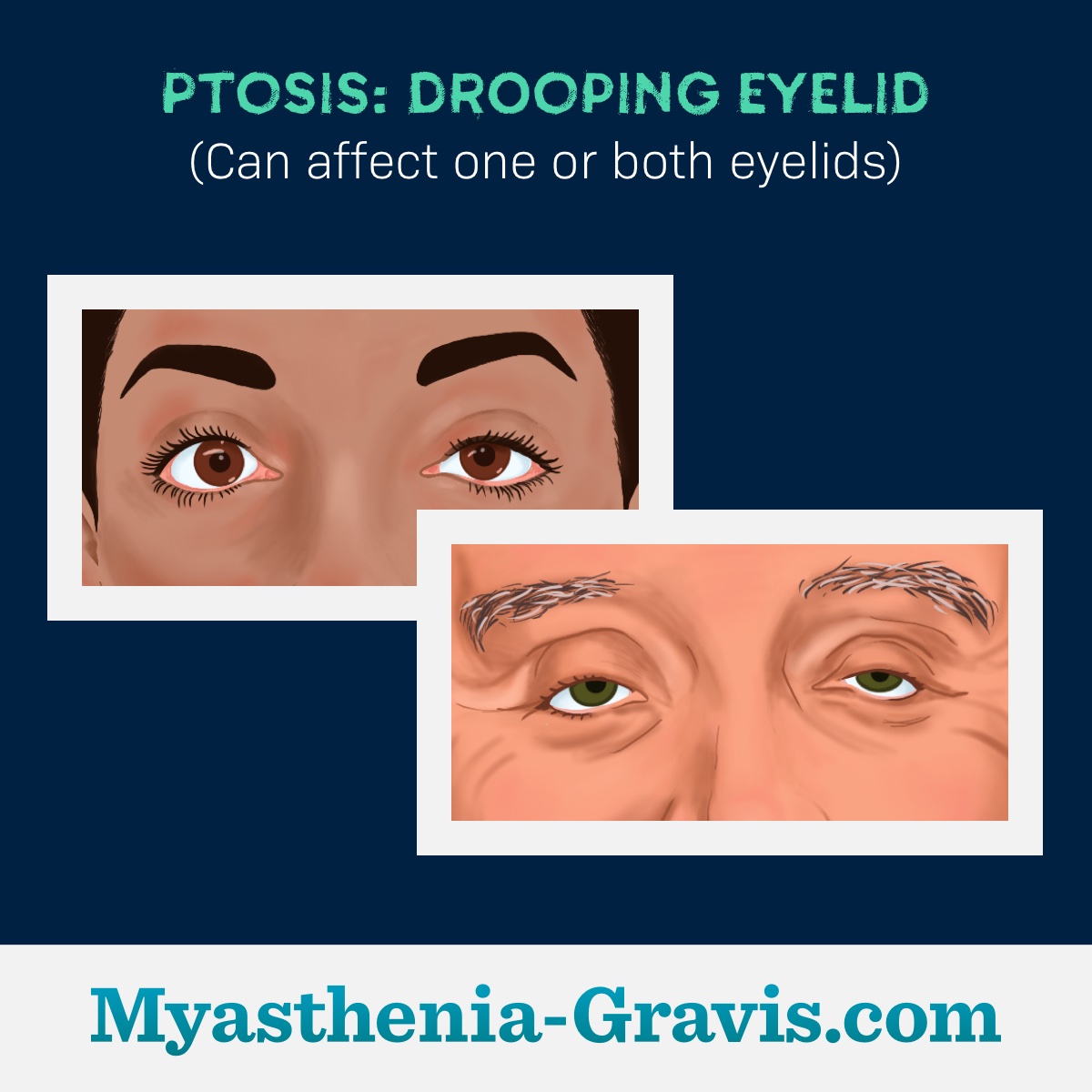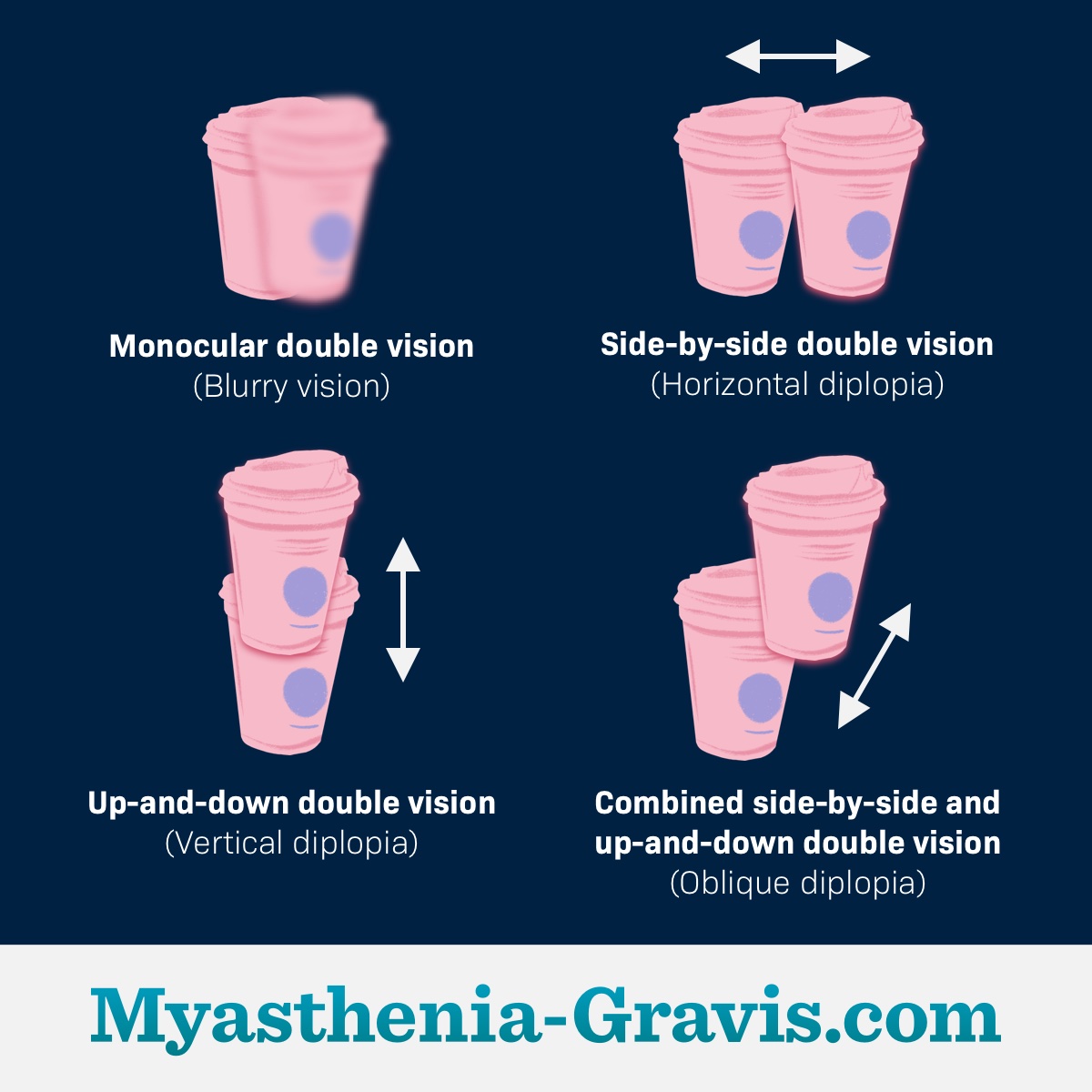What Are the Symptoms of Myasthenia Gravis?
Reviewed by: HU Medical Review Board | Last reviewed: July 2024 | Last updated: July 2024
Myasthenia gravis (MG) is a condition that causes weakness in the voluntary muscles. Voluntary muscles are the ones a healthy person can control. Examples include the muscles in your face, arms, and legs.1,2
The weakness happens because muscles lose their ability to properly receive signals from nerves that control movement. Usually, muscle weakness from MG gets worse later in the day or after physical activity. Muscle strength tends to improve after a rest.1,3
MG is a type of autoimmune disease. With an autoimmune disease, the immune system attacks healthy parts of the body by mistake. In the case of MG, the immune system slowly destroys the communication between nerves and voluntary muscles. There is no cure for MG, but there are many treatments and strategies to help control the symptoms.1,3
Most common symptoms
The most common symptoms of MG are:1-3
This or That
Have you experienced any of these common symptoms?
Muscle weakness is different from person to person and day to day. But most people feel stronger in the morning and weaker as the day goes on. Physical activity tends to make the weakness worse.3
In some people, MG affects the muscles that control breathing. When this muscle weakness becomes severe, it is called a myasthenic crisis. A myasthenic crisis is an emergency. About 1 in 5 people with MG have at least 1 myasthenic crisis in their lives.1-3
Eye muscles
More than 8 out of 10 people with MG have problems with their eyes first. The most common eye symptoms include:4
- Drooping of 1 or both eyelids (ptosis)
- Blurry or double vision (diplopia)
If the muscle weakness remains only in the eyes and never spreads to other muscle groups, it is called ocular myasthenia gravis. About half of people with MG who have eye symptoms first go on to develop muscle weakness in other parts of the body.4
Face, throat, and neck muscles
Once MG spreads past the eye muscles to other muscles, it is called generalized myasthenia gravis.4
Most people develop eye weakness first. But 1 or 2 out of 10 develop weakness in the face, throat, and neck muscles first. Muscles in the face, throat, and neck are called the bulbar muscles. Weakness in these muscles causes:4
- Problems chewing and swallowing
- Choking easily
- Hoarseness or a softer tone when speaking
- Trouble talking
- Lack of facial expression
- Problems holding your head up
Arm and leg muscles
MG may also cause weakness in the muscles of the arms and legs. The upper arm and thighs tend to be affected more than the hands, fingers, and feet.4
Weakness in these muscles may make it harder to:1
- Raise your arms
- Grip and lift things
- Get out of your chair
- Climb stairs
- Walk long distances
Breathing problems
The most serious symptom of MG is a myasthenic crisis and it is a medical emergency. A myasthenic crisis happens when a person with MG has so much trouble breathing that they need an oxygen mask or to be put on a ventilator.1-4
Myasthenic crisis is not a common symptom, but it does happen to about 1 in 5 people with MG. A myasthenic crisis may be triggered by:2
- Stress
- Infection
- Surgery
- A bad reaction to medicine
Symptoms may change
It can be hard to diagnose MG because the symptoms may appear suddenly and then go away after rest. Or, someone may have normal muscle strength 1 day and not the next. Also, MG symptoms can be very different from 1 person to another.1,4
Doctors score how severe MG symptoms are using 5 stages:1
- Eye muscle weakness only
- Mild muscle weakness
- Medium muscle weakness
- Severe muscle weakness
- Severe trouble breathing (myasthenic crisis)
Most people find that their symptoms are worst 1 to 3 years after their MG is diagnosed. MG symptoms can cause many complications. But most people with MG will live as long as the general population.1,4

